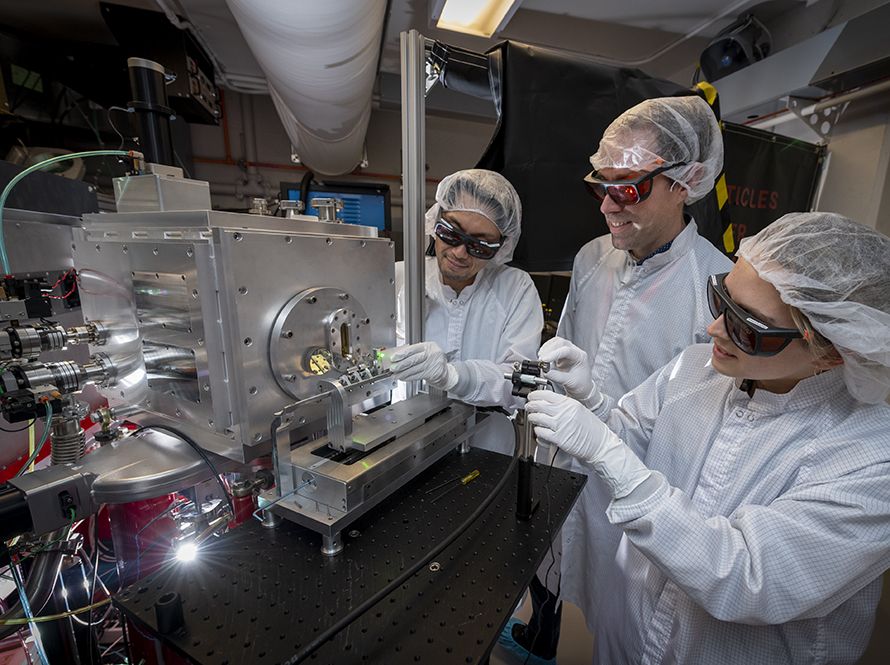
Left: The distribution of LaserNetUS facilities in North America. Right: The facilities offer a wide range of pulse energies and pulse durations.
Supported by the US Department of Energy’s Office of Fusion Energy Sciences, LaserNetUS provides researchers with exclusive beam time on high-power lasers, along with unparalleled access to diagnostics and expertise, at leading centers across North America. A single, streamlined proposal and administration process ensures efficient allocation of beam time at all the facilities, while the network’s coordination opens up unique capabilities that surpass those of any one facility.
The BELLA Center offers LaserNetUS access to the BELLA PW and the BELLA Hundred Terawatt Thomson-scattering (HTT) laser systems. Users benefit from the Center’s unique research expertise in laser-plasma acceleration for applications in high-energy physics, high-energy-density science, and light sources for basic energy sciences and nuclear nonproliferation.

Researchers from the BELLA Center and from the Biological Systems and Engineering Division prepare an apparatus to irradiate biological cell samples with laser-accelerated protons at the BELLA PW laser during a LaserNetUS experiment.
As we collectively explored opportunities for upgrading the ALS to support forefront user science for decades, we faced the challenge of achieving the desired reduction in electron-beam emittance while fitting the machine into the existing, limited space. This challenge called for a collaborative effort, where we brought our unique skills and perspectives to the table, adapting novel ideas, applying accelerator physics modeling and theory skills, and pushing the limits of today’s accelerator technologies.
In addition to providing a great breadth of laser and target conditions, the coordination built into LaserNetUS drives the sharing of equipment and expertise that allow experiments no one facility could support. For example, a recent experiment on precision hydrodynamic shock measurements by a University of Michigan researcher was enabled by the combination of three LaserNetUS nodes: a multi-beam laser and a bright betatron X-ray sources at Berkeley Lab, betatron measurement expertise from the Lawrence Livermore National Lab (LLNL), and an X-ray camera loaned from the SLAC National Accelerator Lab, as well as user expertise and targets.